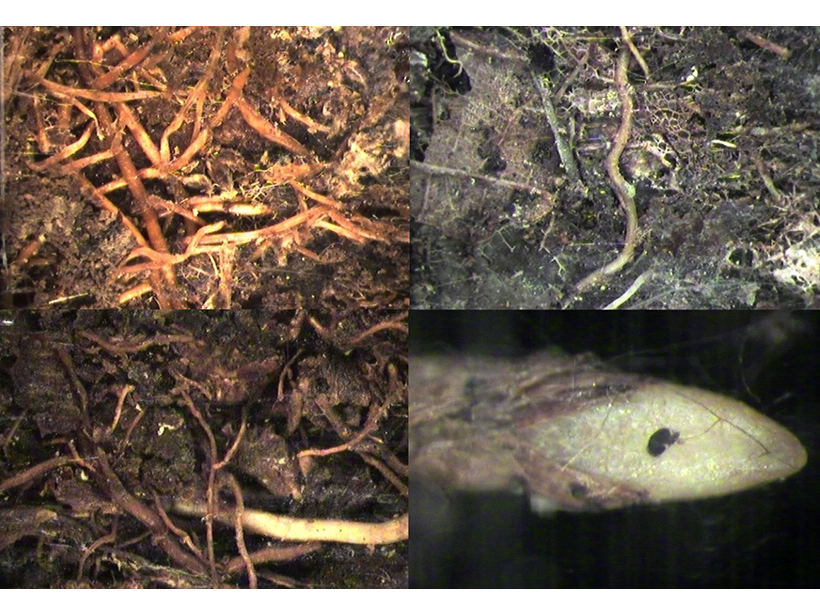Plant roots play an essential role in the global carbon cycle, but they are often underinvestigated and underrepresented in Earth system models (ESMs). Fine roots are estimated to contribute up to 33% of terrestrial plant production, evidence of their key role in the cycling of carbon, water, and nutrients. Few root-sampling methods are nondestructive, however, and even those methods come with their own set of challenges.
This January, root researchers met at Oak Ridge National Laboratory to discuss current challenges in root research. They also discussed some possible solutions that may encourage more researchers to undertake belowground projects. Meeting participants have been using minirhizotrons—instruments that use a transparent tube driven into the soil to collect visible wavelength color imagery of plant roots in situ—in tropical forests in Brazil, Panama, and Puerto Rico; in a deciduous woodland; and in a northern peatland.
One of the main challenges of working with minirhizotrons is image analysis.
The meeting highlighted many areas of improvement, which could help facilitate greater consideration of roots by researchers. One of the main challenges of working with minirhizotrons is image analysis. Many automated and semiautomated software options are available, but none is as reliable as manual root tracing. However, the manual approach can be subjective; communication between researchers is essential to ensure consistency in data collection.
In addition, software available for image analysis is often unsupported and can come with bugs. Attendees met to present and compare their own approaches to image analysis and the software they use, discussing strengths and weaknesses. We aim to publish a minirhizotron methodology to help standardize future research.
At the meeting, we also approached the lack of prior communication between field scientists and modelers for incorporating the minirhizotron data into ESMs. This lack of communication is partly due to the difficulty of scaling root data up to an ecosystem scale. Many modelers attended January’s meeting, and further individual meetings have facilitated greater clarity into how our data could be best incorporated into ESMs. We hope that this will lead to future collaborations.
At a meeting with a minirhizotron camera manufacturer, delegates offered ideas that could be incorporated into their new camera model.
Finally, minirhizotron equipment is pricey and difficult to transport to remote field sites. Therefore, the event included a meeting with a minirhizotron camera manufacturer at which delegates offered ideas for improvements that could be incorporated into their new camera model. These suggestions included providing a camera that could be left in situ and operated remotely, along with the possibility of providing support for image analysis software.
Overall, greater collaboration and communication are key to making root research a more appealing prospect. Through continued discussion in the community and sharing of ideas, we can work toward addressing existing difficulties and providing consistent data sets that can easily be compared within the field and incorporated into models.
Workshop support was provided by the Next Generation Ecosystem Experiments–Tropics program of the U.S. Department of Energy, Office of Science, Biological and Environmental Research Program, and by the Birmingham Institute of Forest Research, University of Birmingham, United Kingdom.
—Clare Ziegler ([email protected]), Department of Biosciences, University of Birmingham, U.K.; Daniela Yaffar, Department of Ecology and Evolutionary Biology, University of Tennessee, Knoxville; also at Oak Ridge National Laboratory, Tenn.; and Amanda Longhi Cordeiro, Department of Geography, University of California, Los Angeles.
Citation:
Ziegler, C.,Yaffar, D., and Cordeiro, A. L. (2019), Sampling in the dark: challenges in fine-root research, Eos, 100, https://doi.org/10.1029/2019EO122695. Published on 06 May 2019.
Text © 2019. The authors. CC BY-NC-ND 3.0
Except where otherwise noted, images are subject to copyright. Any reuse without express permission from the copyright owner is prohibited.

